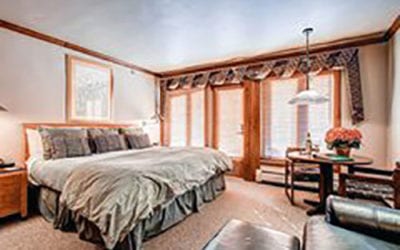Christmas in Germany is always a joy with the multitude of Christmas markets, the town decorations and the churches that dress for the occasion. Bavaria, one of the country’s most Catholic states, is renown for its embrace of Christmas, plus its location, nestled against the Alps, provide plenty of wintry visuals. Here is an overview from the German National Tourist Office of some of Bavaria’s top Christmas activities and sights from the spectacular mountains to castles and holy sites to storied walled cities.
Snowy mountains, historic churches, pilgrimage towns, cozy Christmas markets enclosed in traditional town squares compose the perfect setting for a seasonal visit to the towns in the Ammergau Alps as well as to Altoetting, Bamberg, Munich, Passau, Regensburg and Kaethe the Wohlfahrt’s Christmas Village in Rothenburg ob der Tauber.

A special and comfortable way to discover the Ammergau winter wonderland is by gliding on a horse sleigh through the Graswang Valley to the fairytale King Ludwig’s Castle Linderhof. For the more active traveler however, Ammergau’s slopes are great for every proficiency level from downhill to cross country skiing for less than $30 per day. At New Years Eve the town of Oberammergau greets the new year with the “Sterngang” (Grand Star Procession). Both locals and guests parade through the town with a large illuminated star, accompanied by singers and musicians to sing in the New Year with traditional star songs, that originated in the Middle Ages. www.cometogermany.com

Passau, in the far southeast of Bavaria, is a beautiful city on the crossing of the Danube, Ilz and Inn Rivers and therefore the destination for many cruises. Dominated by the beautiful Baroque St. Stephan’s Cathedral, the old town is a fascinating gem close to the German-Austrian border. The organ in the St. Stephan’s Cathedral is the largest organ in the world with 17,974 pipes. During the Christmas season about 70 selected little stalls show and sell special Christmas goods, presents, arts and crafts in front of the cathedral. Every Wednesday and Saturday in Advent organ concerts are performed at noon. High above Passau is the Baroque monastery church Mariahilf an important pilgrimage church that has an important painting by Lucas Cranach the Elder of the Maria with the baby Jesus from 1537. The 321 pilgrim steps remind visitors of their goal.
Further west along the Danube, Regensburg invites the traveler to the largest original medieval city in Germany. Not destroyed during World War II, the former trade post is full of beautiful Renaissance and Baroque architecture around the majestic Regensburg Cathedral and the Castle of Thurn and Taxis. For 40 years Pope Benedict XVI has been closely linked with Regensburg not only by virtue of his work at the university where he taught for eight years, but also through family ties. The Pope’s brother, Georg Ratzinger, former conductor of the Regensburg Cathedral Boys’ Choir, one of the world’s oldest boys’ choir, still lives in Regensburg while his parents and his sister are buried there. His private residence stands in Pentling, a village close to Regensburg. “Pope Benedict XVI and Regensburg” is the title of a special themed city tour. For the Christmas season Regensburg Tourism offers a special deal for two overnight stays, including a guided city tour, a tour of Castle Thurn and Taxis, free entry to the Christmas Market at the castle and a special boat trip on the Danube. This offer starts at $290 per person.

During Christmas time, Bamberg’s famous Trail of Nativity Scenes comprise more than 38 different churches, public places, chapels, and museums with Christmas Creches and Nativity Scenes of all ages and sizes. Bamberg holds four Christmas Markets during the holiday season with the traditional market, right in the middle of the pedestrian zone on Maximilian Square with an abundance of stalls with regional specialities. A special treat is the medieval Christmas Market in the Old Court on Cathedral Square. With medieval music, craftsmen, and jugglers, plays, mead and ginger bread the Middle Ages are as alive as ever (Dec 6th – Dec 14th). Two smaller markets highlight the handicraft tradition of Bamberg in other quarters of the Old Town on the first and the third weekend of Advent.
Christmas never goes out of season in Kaethe Wohlfahrt’s Christmas Village in the beautiful medieval town of Rothenburg ob der Tauber. All the fascinating, hand-crafted German Christmas decorations and many more beautiful items such as the traditional Christmas Pyramid – a wooden, automatically revolving pyramid with candles – wooden tree ornaments or music boxes can be found in Kaethe Wohlfahrt’s year-round Christmas Village. In addition to the traditional decorations from the Ore Mountains, the manufacturer offers its own hand-made product lines “Kaethes Original” and “Rothenburger Weihnachtswerkstatt.”
For more information contact the German National Tourist Office.

Charlie Leocha is the President of Travelers United. He has been working in Washington, DC, for the past 14 years with Congress, the Department of Transportation, and industry stakeholders on travel issues. He was the first consumer representative to the Advisory Committee for Aviation Consumer Protections appointed by the Secretary of Transportation from 2012 through 2018.




